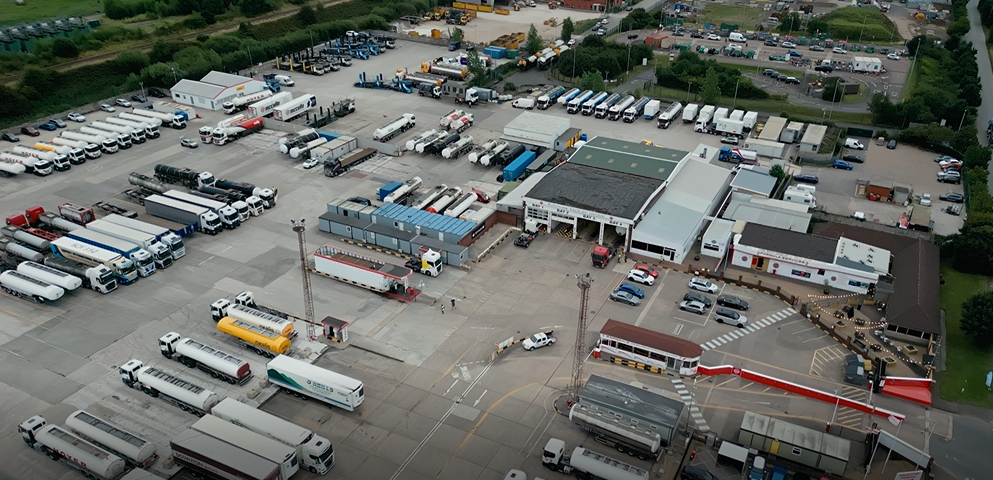
Susie Jones
Où va la taxe sur les poids lourds ?
Créée: 22/08/2024
•
Mise à jour : 22/08/2024
Le 1er août 2023, le gouvernement a réintroduit la taxe sur les poids lourds après une suspension de trois ans. Depuis son introduction en 2014, la taxe a été un événement régulier mais malvenu pour les acteurs du secteur du transport routier - laissant de nombreux conducteurs et flottes se demander quels en sont les avantages.
Qu'est-ce que la taxe sur les poids lourds ?
Le [site web du gouvernement] (https://www.gov.uk/government/collections/hgv-road-user-levy) indique que la taxe sur les poids lourds :
"Elle garantit que tous les poids lourds de 12 tonnes et plus apportent une contribution lorsqu'ils empruntent les routes britanniques.
À quoi sert-elle ?
La taxe porte sur l'impact environnemental et les coûts d'infrastructure des poids lourds au Royaume-Uni. Son objectif et les avantages qu'elle propose sont les suivants :
Équité - La redevance garantit que les camions qui exercent une pression importante sur l'infrastructure routière contribuent aux coûts d'entretien et de développement.
Émissions - En raison de l'impact environnemental des poids lourds, la taxe encourage l'utilisation de véhicules plus propres et plus efficaces.
Entretien des routes - Les fonds provenant de la taxe sur les poids lourds permettent d'entretenir et d'améliorer l'infrastructure routière, en veillant à ce que ceux qui bénéficient du réseau routier contribuent directement à son entretien.
Pourquoi la taxe sur les poids lourds a-t-elle été suspendue ?
Pendant la pandémie de 2020, le gouvernement a suspendu la taxe sur les poids lourds afin de réduire les obligations financières des transporteurs britanniques et étrangers. Une suspension d'un an était prévue, mais elle a été étendue à trois ans.
La nouvelle taxe sur les poids lourds a été réintroduite et vise principalement les émissions, le poids et le temps passé au Royaume-Uni. Les transporteurs peuvent s'attendre à payer entre 150 et 749 livres sterling en fonction du poids du véhicule (y compris le poids de la remorque), de sa classe d'émissions Euro et du temps qu'il passe au Royaume-Uni.

Où les conducteurs veulent-ils que la taxe soit dépensée ?
Un [rapport partagé par la RHA] (https://motortransport.co.uk/pay-for-bridge-strike-signs-and-road-improvements-out-of-hgv-levy-rha/12885.article) indique que ses membres souhaitent que les panneaux de signalisation de grève des ponts soient financés par la taxe. Cependant, une enquête menée via [Facebook] (https://www.facebook.com/photo/?fbid=696516702518005&set=a.482170237285987&locale=en_GB) a révélé que 75 % des conducteurs souhaitaient que l'argent de la taxe sur les poids lourds soit consacré à l'amélioration des installations routières.
Luke, chauffeur de camion, souhaite que "la taxe sur les poids lourds soit investie avant tout dans des parkings sécurisés, hygiéniques et abordables".
Les relais routiers étant un refuge pour les chauffeurs, il est essentiel qu'ils leur offrent d'excellentes installations et un parking sécurisé. Pour de nombreux conducteurs, les relais routiers sont bien plus qu'un lieu de repos et de ravitaillement : ils jouent un rôle crucial dans l'amélioration de leur bien-être.
Les conducteurs Ian et Peter souhaitent que l'argent soit dépensé pour étendre le réseau à l'ensemble du Royaume-Uni.
"Nous avons besoin de plus d'emplacements pour nous garer en toute sécurité", déclare Ian. Peter explique que le secteur a un besoin urgent de "meilleures installations dans les gares et de nouvelles gares routières".
Bien que la réintroduction de la taxe sur les poids lourds ait été accueillie négativement par les acteurs du secteur du transport routier, les entreprises doivent accepter qu'elle est là pour durer. Son rôle est de garantir des revenus pour l'entretien des routes et est essentiel pour encourager un secteur propre et plus efficace.
Qui doit payer la redevance pour l'utilisation des routes par les poids lourds ?
Les opérateurs et les conducteurs sont responsables du paiement de la redevance. Les véhicules non britanniques doivent payer avant d'entrer dans le pays. Pour les camions immatriculés au Royaume-Uni, les taux sont calculés automatiquement par le DVLA et payés lors de la même transaction que la taxe d'exercice du véhicule.
Le gouvernement finance-t-il encore la formation des conducteurs de poids lourds ?
Afin d'atténuer la pression que le Brexit et la pandémie ont exercée sur le secteur du transport routier, le gouvernement a mis en place, en 2021, des plans visant à augmenter le nombre de conducteurs sur les routes. Le financement a permis de former 4 000 conducteurs pour qu'ils obtiennent leur permis de conduire des poids lourds. Les HGV Skills Bootcamps ont été ouverts pour financer également d'autres apprenants adultes.
Le ministère de l'éducation a confirmé que le financement se poursuivrait jusqu'à la fin de l'année scolaire 2023.



